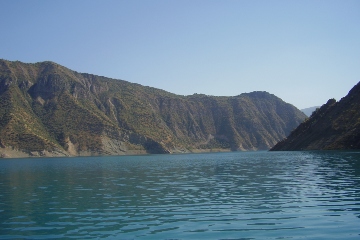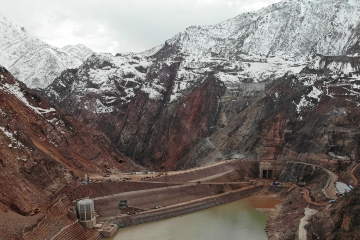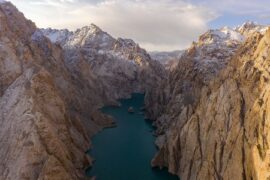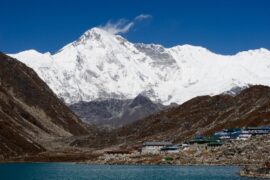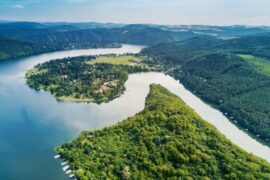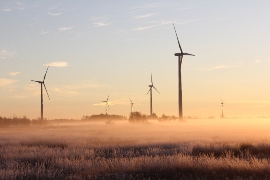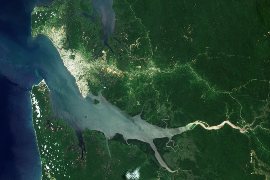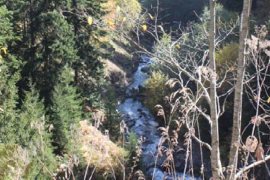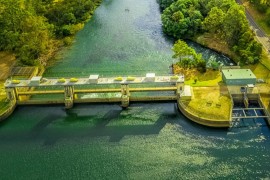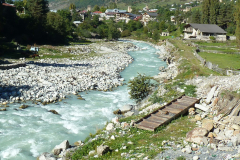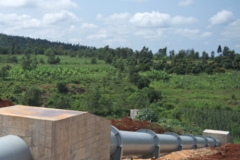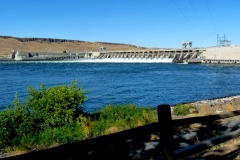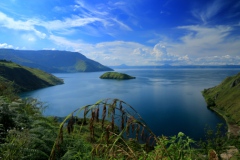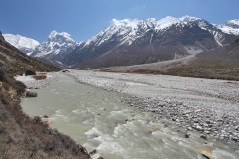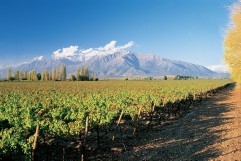Desafío
El mundo se enfrenta un desafío fundamental: satisfacer la creciente demanda de energía necesaria para consolidar e impulsar las economías y erradicar la pobreza, mientras se reducen drásticamente las emisiones de carbono y se conservan los ecosistemas y las comunidades dependientes de los ríos. La realidad del cambio climático exige que el mundo haga la transición a un futuro energético más sostenible.
La energía hidroeléctrica es una fuente de energía renovable con baja huella de carbono, pero que a menudo ha estado vinculada a altos impactos sociales (desplazamientos de comunidades) y ambientales (daños y pérdidas de ecosistemas riparios y beneficios derivados). El desarrollo de la energía hidroeléctrica se enfrenta al desafío de proponer alternativas creíbles para disminuir la necesidad de grandes presas.
Se requiere un enfoque a nivel de cuenca o escala de sistema para el desarrollo de la energía hidroeléctrica para garantizar resultados sostenibles de los proyectos hidroeléctricos en todo el mundo. Los enfoques de planificación del paisaje, que integran las demandas ambientales y otros usos y usuarios, pueden sustentar los servicios del ecosistema y ofrecer el potencial de amplios beneficios económicos además de la generación de energía, como el suministro de agua, la gestión del riesgo de inundaciones, el riego y el hábitat para los peces migratorios y la biodiversidad. Además, proporciona una plataforma para involucrar mejor los proyectos con las partes interesadas y otros proyectos que operan en la misma cuenca. Para respaldar un enfoque a escala de sistema, se necesitan evaluaciones de los recursos hídricos a nivel de cuenca, teniendo en cuenta estos posibles beneficios.
Enfoque FutureWater
FutureWater está desarrollando de manera propia herramientas avanzadas de última generación que se están aplicando en una amplia gama de proyectos hidroeléctricos sostenibles. Dependiendo del contexto y los temas de interés, se seleccionan una herramienta y fuentes de datos, que incluyen conjuntos de datos de detección remota en la extensión de los glaciares para áreas de alta montaña, conjuntos de datos de reanálisis para obtener datos climáticos globales consistentes, y modelos hidrológicos y de asignación óptima de recursos.
Por ejemplo, para pequeños proyectos hidroeléctricos de escurrimiento de ríos en áreas de alta montaña, FutureWater aplica el modelo glacio-hidrológico SPHY para cuantificar las curvas de duración del flujo y recurrencia de inundaciones extremas. En ocasiones, este modelo es forzado con escenarios y pronósticos de cambio climático escalados regionalmente para evaluar los riesgos climáticos y su impacto en la generación de energía hidroeléctrica, y analizar estrategias de actuación para incrementar la resiliencia de los sistemas y activos hidroeléctricos.
Para los enfoques de planificación de paisajes a nivel de cuenca, FutureWater tiene una amplia experiencia en la evaluación del potencial de las actividades de Gestión Sostenible de la Tierra en una cuenca, sus costos y beneficios, su impacto en la generación de energía hidroeléctrica y las demandas y suministros de otros usos y usuarios y flujos ambientales. Para apoyar el diálogo con las partes interesadas y proporcionar evidencia cuantitativa sobre posibles casos de negocios para esquemas de reparto de ingresos, el análisis de retorno de la inversión puede realizarse y presentarse de manera que sea comprensible y transparente para un público amplio.
Proyectos relacionados
-
Climate Change Risk Analysis for Rogun Dam
The Rogun HPP is a large project (3,780MW) under construction located on the Vakhsh River located about 110 km East-Northeast of Dushanbe, the capital of Tajikistan. It is a project that will have a large reservoir capable of providing seasonal regulation. It will supply firm energy during the winter months...
-
Climate Risk Assessment for the Rogun Dam in Tajikistan
The Rogun HPP is a large project (3,780MW) under construction located on the Vakhsh River in Tajikistan. It will supply firm energy during the winter months when demand for electricity is the highest in Tajikistan and will allow for exports of clean electricity to the Central Asia (CA) region and...
-
Climate Risk Assessment: Golovnaya Hydropower Plant, Tajikistan
The Asian Development Bank (ADB) is supporting the rehabilitation of the 240-MW Golovnaya Hydropower Plant in Tajikistan, aiming to increase renewable energy supply from 743 GWh to 1,130 GWh. The project includes refurbishing the generation units. FutureWater supported ADB by assessing the climate risk and adaptation options for this investment...
-
WE-ACT: Water Efficient Allocation in a Central Asian Transboundary River Basin
El objetivo general del proyecto WE-ACT es demostrar un sistema de apoyo a la toma de decisiones (DSS) para la asignación de agua en un río transfronterizo de Asia Central, con el fin de aumentar los beneficios compartidos y fomentar la adaptación de la gestión y planificación de los recursos...
-
Climate Risk and Adaptation Assessment for Hydropower Project in Nepal
Climate risk and adaptation (CRA) assessment is required for the 635 MW Dudhkoshi hydroelectric project (DKSHEP) to ensure the project addresses climate change mitigation and adaptation in accordance with ADB’s requirements. The initial Climate Risk Assessment (CRA) by FutureWater in 2021 suggested the project is likely to be affected by...
-
SOS-Water: Water Resources System Safe Operating Space in a Changing Climate and Society
El objetivo del proyecto SOS-Water es establecer los límites dentro de los cuales la capacidad del paisaje para proporcionar servicios ecosistémicos no esté en peligro y la capacidad de la sociedad para adaptarse a los cambios ambientales no esté sobrecargada. Cruzar esos umbrales o puntos de inflexión en el complejo...
-
Climate Risk and Adaptation Assessment for Nepal’s Power Sector
Nepal’s power sector predominantly relies on hydropower generation. Hydropower is vulnerable to climate change and natural disasters caused by climate change. An understanding of the future impact of climate change on hydropower assets and their performance is important for the successful implementation of hydropower projects. Climate risk and adaptation (CRA)...
-
Renewable Energy for Climate Resilience in Bhutan
The goal of the Asian Development Bank project ‘Renewable Energy for Climate Resilience’ in Bhutan is to diversify Bhutan’s energy portfolio. The rationale for diversification is related to the expectation that climate change impacts on the cryosphere and hydrology in Bhutan will lead to less reliable flows, in particular outside...
-
Improved Watershed and Forestry Activities to Secure Hydropower
This study supports Gabon in preserving Hydrologic Ecosystem Services in a river basin which faces challenges due to planned hydropower and forestry operations. It will evaluate various watershed management scenarios which may improve hydrological flow conditions and hydropower options. FutureWater analyzes hydrological ecosystem services provision in the Komo basin through...
-
Hydrological Assessment for Hydropower in the Lukhra River
The objective was to develop a hydrological assessment for a planned run-of-river hydropower plant in the Lukhra river basin in Georgia. There is no observed river discharge data available. Hence, the assessment was developed based on hydrological simulations of the basin using the SPHY model (Terink et al., 2015) and...
-
eLearning on Hydrology and Climate Change for Hydropower Professionals
Hydropower production in Indonesia is the main renewable energy source in the country. There is a potential to double the capacity by building new hydropower plants and to optimize current plants. PLN is the main hydropower company in the country. The project aims at enhancing the capacity of its staff...
-
Feasibility Study for the Development of a ‘Small-hydro Climate Risk Assessment Tool’
Small hydropower (1 - 20 MW) does not require a Climate Risk Assessments yet, but this will eventually happen in the future. Investors are highly interested in the profitability of these small hydropower stations, especially because of the uncertainty caused by future climate change. Current methods for Climate Risk Assessments...
-
Glacio-hydrological Assessment for Hydropower in the Nakhra River
The objective was to develop a glacio-hydrological assessment for planned run-of-river hydropower plant locations in the Nakhraa river basin in Georgia. The availability of observed river flow data is limited. Hence the assessment was developed based on hydrological simulations of the basin using the SPHY model (Terink et al., 2015)....
-
Glacio-hydrological assessment for hydropower, Mestiachala river, Georgia
The objective of this project was to develop a hydrological assessment for two potential hydropower plant locations in the Mestiachala basin in Georgia. The availability of observed river discharge data is limited. Hence the assessment was developed based on hydrological simulations of the basin using the SPHY model (Terink et...
-
Improved catchment management for small hydropower
This study assessed the impacts of various investment portfolios for catchment management activities on the cost-benefits of small hydropower schemes, in two case study catchments in Kenya and Tanzania, and analyzes the return-on-investment for the hydropower developers. Catchment degradation trends, climate change impacts and socio-economic changes increasing competing water use...
-
Evaluación del riesgo climático usando el Marco del Árbol de Decisión para dos proyectos hídricos en Kenia y Nepal
La novedosa metodología del Marco del Árbol de Decisión (DTF) del Banco Mundial se emplea para evaluar los riesgos climáticos versus otros riesgos no climáticos asociados a dos inversiones planificadas: (1) la infraestructura de protección contra inundaciones y expansión de tierras de cultivo irrigadas en el río Nzoia (Kenia); y...
-
Hydrological assessment for two potential sites for run-of-river hydropower, southwestern Georgia
A hydrological assessment was carried out for two sites where run-of-river hydropower plants are planned, in the southwestern part of Georgia. Only very limited streamflow data were available, so the assessment was based mainly on hydrological modelling of the basin upstream of the points of interest. Principally global datasets were...
-
Hydrological pre-feasibility assessment for a potential hydropower plant, North Sumatra, Indonesia
Following the successful development of hydropower facilities in Indonesia, a new project was established to study the potentials for the development of a hydro-electric power plant in the Tripa Basin, North Sumatra, Indonesia. To make a go/no-go decision of a more detailed feasibility study, a pre-feasibility study is undertaken to...
-
Hydropower Development Assessment for the Tamakoshi River Basin
The overall objective of this project is to improve the understanding of the expected impacts of climate change on water availability in the context of potential hydropower development in the Tamakoshi River Basin. Specifically, the project aims to (i) Understand the current baseline hydrological regime of the Tamakoshi River Basin,...
-
Review Climate Change Hindu-Kush-Himalaya
FutureWater provided a comprehensive review study on climate change and the impacts on cryosphere, hydrological regimes and glacier lakes in the Indus, Ganges, and Brahmaputra river basins. This review study was done in the context of future hydropower development in the region.
-
Central Asia Regional Risk Assessment for Water Related Energy Sector Impacts
The objective of this study was to support the “Central Asia Regional Energy Sector Vulnerability Study” led by Industrial Economics (IEc) and funded by the World Bank, by carrying out an expanded risk assessment for water availability and water related energy sector impacts in Central Asia. The work built on...
-
INTOGENER: La integración de datos satelitales y modelos de previsión para aplicaciones energéticas
La necesidad de tener un pronóstico preciso a corto y mediano plazo de los caudales de rio generados por el deshielo en las cuencas de alta montaña es un componente importante para la gestión del agua y las actividades hidroeléctricas en varios ámbitos a escala global. Debido a la lejanía y el difícil acceso en...

